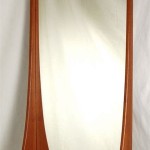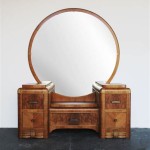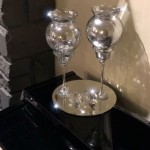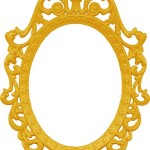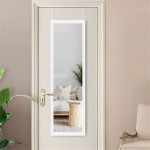Can Acrylic Paint Be Used on Mirrors?
Understanding the essential aspects of using acrylic paint on mirrors is crucial for successful and effective application. This article will delve into the important considerations, providing insights into the compatibility, techniques, and potential applications of acrylic paint on mirror surfaces.
Acrylic paint is a versatile medium that offers various advantages for painting on mirrors. Its fast-drying nature, vibrant colors, and ability to adhere to a range of surfaces make it a suitable choice for decorative and functional applications.
Compatibility
Acrylic paint is generally compatible with glass surfaces, including mirrors. Its water-based formula allows for easy application and cleanup, eliminating the need for harsh solvents. The paint forms a durable bond with the mirror's surface, ensuring longevity and resistance to chipping and peeling.
Preparation
Proper preparation is essential for successful adhesion of acrylic paint to mirrors. The surface should be thoroughly cleaned with a glass cleaner to remove any dirt, dust, or oil that may interfere with paint adherence. Once cleaned, the mirror should be allowed to dry completely before applying paint.
For enhanced adhesion, consider applying a primer specifically designed for glass surfaces. This will provide a more stable base for the acrylic paint, reducing the risk of peeling or chipping over time.
Application Techniques
When applying acrylic paint to mirrors, several techniques can be used to achieve different effects. Using a brush allows for precise control and detailed painting. Sponges or stencils can create unique patterns and textures. For a smooth, even finish, consider using a spray paint specifically formulated for glass surfaces.
Drying Time
Acrylic paint dries quickly, typically within 30 minutes to an hour. However, the drying time may vary depending on the thickness of the paint application. Allowing sufficient drying time before touching or manipulating the painted surface is crucial to prevent smudging or damage.
Removable vs. Permanent
The removability of acrylic paint from mirrors depends on the specific paint used. Some acrylic paints are water-soluble, allowing for easy removal with water and a soft cloth. Others are permanent and may require a paint remover or solvents for removal.
Applications
Acrylic paint can be used for various applications on mirrors, including decorative accents, functional markings, or complete mirror makeovers. It is commonly used to create intricate designs, lettering, or borders on mirrors, adding a personal touch to home décor or commercial spaces.

Painting On Mirrors An Easy Step By Guide

Painting On Mirrors An Easy Step By Guide

Painting On Mirrors An Easy Step By Guide

How To Decorate A Mirror With Acrylic Paint Pens Diy Painting

Acrylic Paint On Glass How It Works I Nova Color

Painting With Mirrors Simple Process Art One Time Through

Painting On Mirrors An Easy Step By Guide

Acrylic Paint On Glass A Guide To Painting With

How To Paint A Mirror With Pictures Wikihow

Acrylic Paint On Glass A Guide To Painting With


